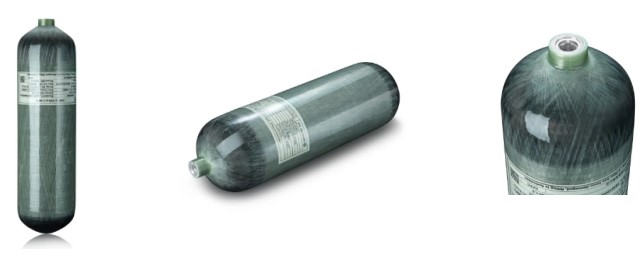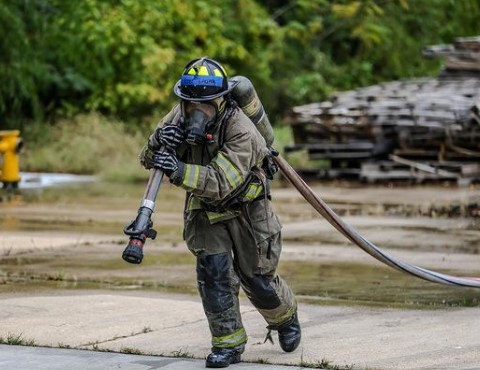Self-Contained Breathing Apparatus (SCBA) equipment plays a vital role in safeguarding the health and safety of firefighters, industrial workers, and emergency responders who operate in environments where the air quality is hazardous or compromised. Ensuring that these devices meet rigorous industry standards and regulations is not only a legal obligation but a critical measure to protect lives. This article delves into the significance of adhering to SCBA standards, emphasizing how compliance impacts the safety and performance of these essential life-saving devices, with a focus on the role of carbon fiber cylinders.
The Regulatory Landscape
SCBA equipment is subject to stringent regulations set by various international and national bodies to ensure maximum safety and reliability. In the United States, the National Fire Protection Association (NFPA) provides comprehensive guidelines, while the European Standard (EN) governs compliance in the European Union. Different countries have their own specific regulations depending on the intended application, all of which encompass detailed specifications for design, testing, performance, and maintenance.
The Role of Carbon Fiber Cylinders
Carbon fiber cylinders are an integral component of SCBA equipment, offering significant advantages due to their strength-to-weight ratio. These cylinders, crafted from advanced carbon fiber composites, are crucial for providing a reliable supply of breathable air while maintaining a lightweight profile, allowing emergency responders to move with ease in challenging environments.
Advantages of Carbon Fiber Cylinders
1-Lightweight and Durable: Carbon fiber cylinders are significantly lighter than traditional steel cylinders, reducing the physical burden on users. This is especially beneficial for firefighters and emergency personnel who must carry heavy gear over extended periods.
2-High Pressure Capacity: These cylinders can hold compressed air at much higher pressures, allowing for longer air supply duration, which is critical during extended operations.
3-Corrosion Resistance: Carbon fiber materials are highly resistant to corrosion, ensuring that the cylinders maintain their structural integrity even in harsh and chemically aggressive environments.
4-Enhanced Safety: The robust nature of carbon fiber ensures that these cylinders can withstand extreme temperatures and impacts without compromising safety, providing an extra layer of protection in volatile situations.
Compliance in Design and Manufacturing
Compliance begins at the design and manufacturing stages, where SCBA units must adhere to specific performance standards. This includes meeting criteria for air supply duration, pressure ratings, and resistance to environmental hazards like heat, chemicals, and physical stress.
Manufacturers are required to:
-Conduct rigorous testing to certify that SCBA units can endure extreme conditions, such as high temperatures and intense mechanical forces.
-Ensure that carbon fiber cylinders are precisely manufactured to maintain uniformity in strength and performance across all units.
-Implement quality control measures that guarantee each unit performs reliably under diverse operational scenarios.
Importance of Regular Testing and Certification
Once SCBA equipment is deployed, regular testing and maintenance are vital to maintaining compliance. This ongoing process ensures that the equipment continues to function correctly and safely throughout its service life. Routine inspections involve:
-Air Quality Checks: Ensuring the air supply remains uncontaminated and meets safety standards.
-Valve and Regulator Inspections: Checking that all components operate seamlessly without leaks or malfunctions.
-Mask Integrity Tests: Verifying that face masks maintain their seal and do not degrade over time.
Failure to perform these essential tests can result in equipment failure, posing serious risks to users. It is imperative for organizations to schedule regular maintenance checks and keep meticulous records of these evaluations to avoid lapses in safety.
Training and Correct Usage
Adhering to SCBA standards extends beyond equipment compliance; it also encompasses user training and proper usage protocols. Training programs are crucial to ensure personnel are not only equipped with the devices but are also competent in their operation and aware of their limitations.
Training covers areas such as:
-Correct Fitting Procedures: Ensuring users can properly don SCBA gear to create an effective seal against hazardous atmospheres.
-Understanding Limitations: Recognizing the capabilities and constraints of SCBA systems, including the air supply duration of carbon fiber cylinders.
-Maintenance Awareness: Educating users on the importance of regular checks and the role they play in maintaining equipment integrity.
Legal and Ethical Considerations
Non-compliance with SCBA standards carries significant legal and ethical implications. In the event of an incident, organizations can face legal repercussions if it is determined that they failed to provide adequate safety measures. Beyond legal responsibilities, there is an ethical obligation to protect employees and responders by ensuring they have access to reliable and compliant equipment.
The Role of Technology in Compliance
As technology evolves, so too do the standards governing SCBA equipment. Continuous advancements in materials, such as carbon fiber composites, and improvements in design methodologies necessitate updates to regulatory standards. Organizations must stay informed about these changes to ensure ongoing compliance and to leverage new technologies for enhanced safety and performance.
Emerging technologies include:
-Smart Monitoring Systems: Integration of digital systems that provide real-time monitoring of air supply levels and environmental conditions.
-Advanced Materials Research: Ongoing development of even more robust and lightweight carbon fiber composites to further enhance cylinder performance.
Conclusion
Compliance with SCBA standards is a multifaceted process that involves collaboration among manufacturers, regulatory bodies, organizations, and end-users. It requires a steadfast commitment to safety, rigorous testing, and continual training to ensure these critical devices perform their life-saving functions effectively.
The integration of carbon fiber cylinders represents a significant advancement in SCBA technology, offering unparalleled strength, durability, and efficiency. As industries and emergency services continue to prioritize safety and reliability, adhering to established standards remains paramount, safeguarding lives and minimizing liabilities while advancing the frontiers of personal protective equipment.
Post time: Jul-23-2024


